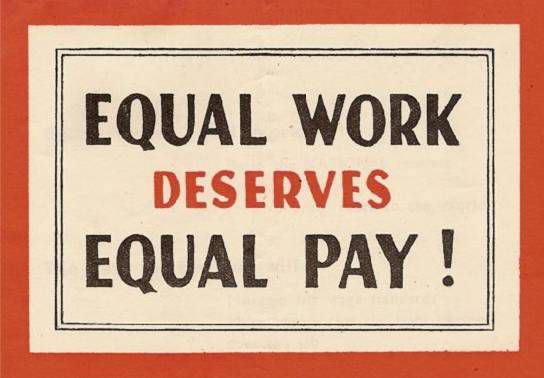

When the jobs, titles, and qualifications are the same for both men and women, this should be simple and straightforward. How do workers and companies achieve pay equity? It starts with the hiring process and ensuring that women are hired at salaries commensurate with their male counterparts. It’s time to reexamine how women workers are valued, supported, and paid.

These issues predate Covid-19, but the pandemic exposed the need for better solutions that support working women. Systemic issues underlying the wage gap include a historic devaluation of traditional “women’s” work, as well as an absence of supports for essential family care. These gender and racial wage gaps can amount to hundreds of thousands of dollars denied over the course of workers’ lifetimes. Black and Latina women with a bachelor’s degree have the largest gap at 65%, and Black women with advanced degrees earn 70% of what White men with advanced degrees earn. It’s no secret that women earn less than men, despite the federal Equal Pay Act of 1963 and state laws requiring equal pay for equal work.Ĭalifornia’s Fair Pay Act, perhaps the strongest, requires equal pay for “substantially similar work, when viewed as a composite of skill, effort, and responsibility, and performed under similar working conditions.” This act requires that any factor underlying a disparity must be “applied reasonably” and “account for the entire wage differential.” Eighteen states have less stringent laws and one state-Mississippi-has no equal pay laws.ĭespite legal and legislative developments, statistics show that women across the country are paid on average 82% of what men are paid. The impact of these developments was especially hard for women of color and low-wage earners. This year, we must also recognize the effects of a pandemic that, according to the Department of Labor, may have set women’s participation in the labor force back by more than 30 years and may also have stalled many of the pay equity gains of the last few decades.Ĭovid-19 forced many women out of the workforce: The February 2021 participation rate-55.8 %-was the same rate as in April 1987. For mothers and women of color, this date falls later in the year. On March 15, Equal Pay Day, we marked the number of extra days women, on average, must work to earn what men, on average, earned the prior year. As we honor the achievements of women during Women’s History Month, it’s a good time to assess where women are in terms of equal pay in the workplace.


 0 kommentar(er)
0 kommentar(er)
